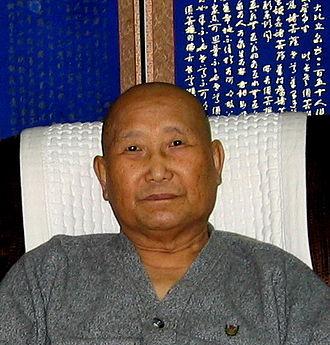
Seung Sahn Haeng Won Dae Soen-sa (Korean: 숭산행원대선사, Hanja: 崇山行願大禪師) (August 1, 1927 – November 30, 2004), born Duk-In Lee, was a South Korean Jogye Seon master and founder of the international Kwan Um School of Zen—the largest (Western Based) Zen institution present in the western hemisphere . He was the seventy-eighth Patriarch in his lineage. As one of the early Korean Zen masters to settle in the United States, he opened many temples and practice groups across the globe. He was known for his charismatic style and direct presentation of Zen, which was well tailored for the Western audience. Known by students for his many correspondences with them through letters, his utilization of Dharma combat, and expressions such as “only don’t know” or “only go straight” in teachings, he was conferred the honorific title of Dae Jong Sa in June 2004 by the Jogye order for a lifetime of achievements. Considered the highest honor to have bestowed upon one in the order, the title translates to mean Great Lineage Master and was bestowed for his establishment of the World Wide Kwan Um School of Zen. He died in November that year at Hwa Gae Sah in Seoul, South Korea, at age 77.
Early life and education
Seung Sahn was born as Duk-In Lee in Sunchon (순천), South Pyongan Province, Korea (now North Korea) in 1927 to Presbyterian parents. In 1944 he joined an underground resistance movement in response to the ongoing Imperial Japanese occupation of Korea. He was captured by Japanese police shortly after, avoided a death sentence, and spent time in prison. Upon release, he studied Western philosophy at Dongguk University in South Korea. One day, a monk friend of his lent him a copy of the Diamond Sutra. While reading the text, he became inspired to ordain as a monk and left school—receiving the Vinaya precepts in 1948. Seung Sahn then performed a one-hundred day solitary retreat in the mountains of Korea, living on a diet of pine needles and rain water. It is said he attained enlightenment on this retreat. While seeking out a teacher who could confirm his enlightenment he found Ko Bong Soen Sa Nim, who told him to keep a not-knowing mind. In the fall of 1948 Seung Sahn learned Dharma combat while sitting a one-hundred day sesshin at Su Dok Sa—where he was known to stir up mischief, nearly being expelled from the monastery. After the sesshin was concluded he received inka from two masters, Keum Bong and Keum Oh. He then went to see Ko Bong, who confirmed Seung Sahn’s enlightenment on January 25, 1949 (giving Seung Sahn Dharma transmission). Seung Sahn is the only person Ko Bong gave Dharma transmission to. He spent the next three years in observed silence.
Career
Drafted into the South Korean army in 1953—he served as an army chaplain and then as captain for almost five years, taking over for Ko Bong as abbot of Hwa Gae Sah in Seoul, South Korea in 1957. In the next decade he would go on to found temples in Hong Kong and Japan. While in Japan he was acquainted with the kong-an tradition of the Rinzai sect, likely undergoing kong-an study with a Rinzai master. Coming to the United States in 1972, he settled in Providence, Rhode Island and worked at a laundromat as a repairman—spending much of his off time improving upon his English. Shortly after arriving, he found his first students at nearby Brown University—most of whom came by way of a recommendation from a professor there. Among these first students was Jacob Perl, who helped to found the Providence Zen Center with the others.
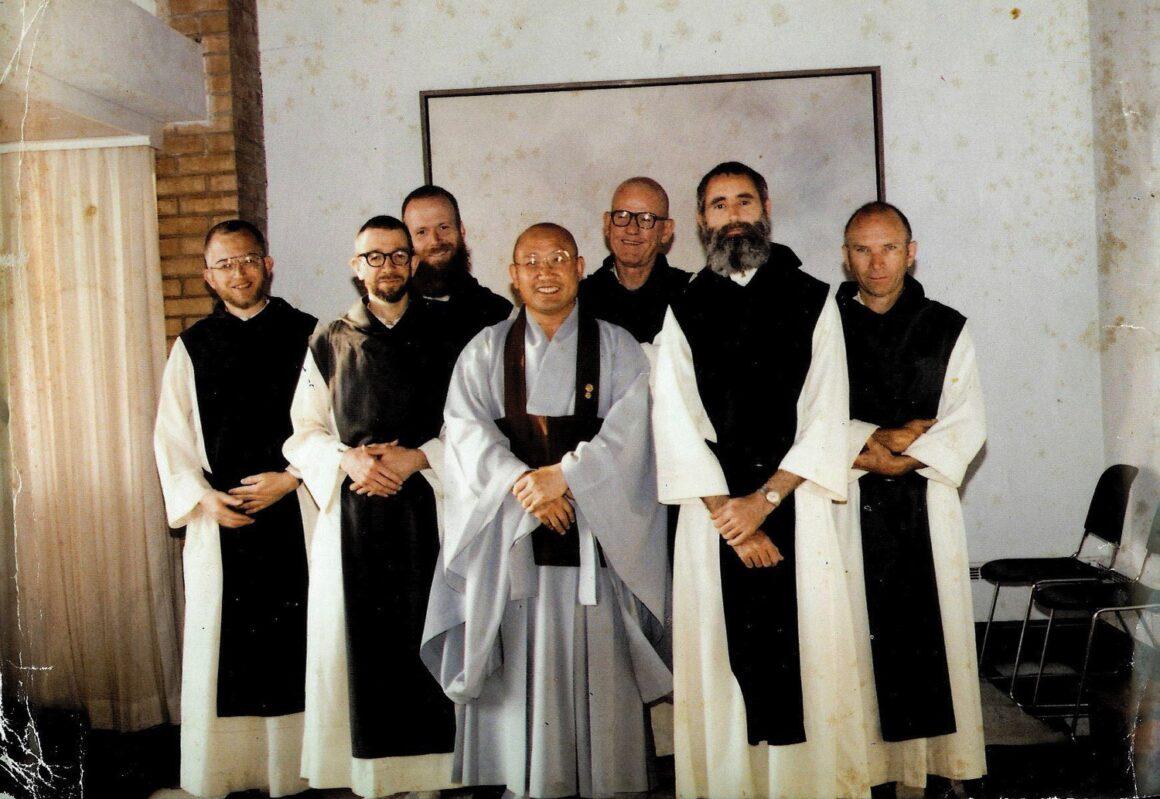
In 1974 Seung Sahn began founding more Zen centers in the United States—his school still yet to be established—beginning with Dharma Zen Center in Los Angeles, California—a place where laypeople and the ordained could practice and live together. That following year he went on to found the Chogye International Zen Center of New York City, and then in 1977 Empty Gate Zen Center. Meanwhile, in 1979, the Providence Zen Center moved from its location in Providence to its current space in Cumberland, Rhode Island.
The Kwan Um School of Zen was founded in 1983 and—unlike more traditional practice in Korea—Seung Sahn allowed the laity in the lineage to wear the robe of a Buddhist monk. Celibacy was not required, and the rituals of the school are unique. For instance: although the Kwan Um School does utilize traditional Seon and Japanese Zen ritual, elements of their practice also closely resemble rituals found often in Pure Land, Ch’an and Huayen traditions. In 1986, along with a former student and Dharma heir Dae Gak, Seung Sahn founded a retreat center and temple in Clay City, Kentucky called Furnace Mountain—the temple name being Kwan Se Um San Ji Sah (or, Perceive World Sound High Ground Temple). The center functions independently of the Kwan Um organization today.Over his tenure as Guiding Teacher, Seung Sahn appointed many Dharma heirs. He created the title Ji Do Poep Sa Nim (JDPSN) for those not ready for full Dharma transmission but capable of teaching at a higher capacity. In 1977 Seung Sahn was hospitalized for having irregular heartbeats, and it was then discovered that he had advanced diabetes. He had been in and out of hospitals for heart complications for years preceding his death, and in 1987 began spending much less time at his residence in the Providence Zen Center. Starting in 1990, and under invitation from Mikhail Gorbachev, Seung Sahn began making trips to the USSR to teach. His student, Myong Gong Sunim, later opened a practice center in the country (Novgorod Center of Zen Meditation).
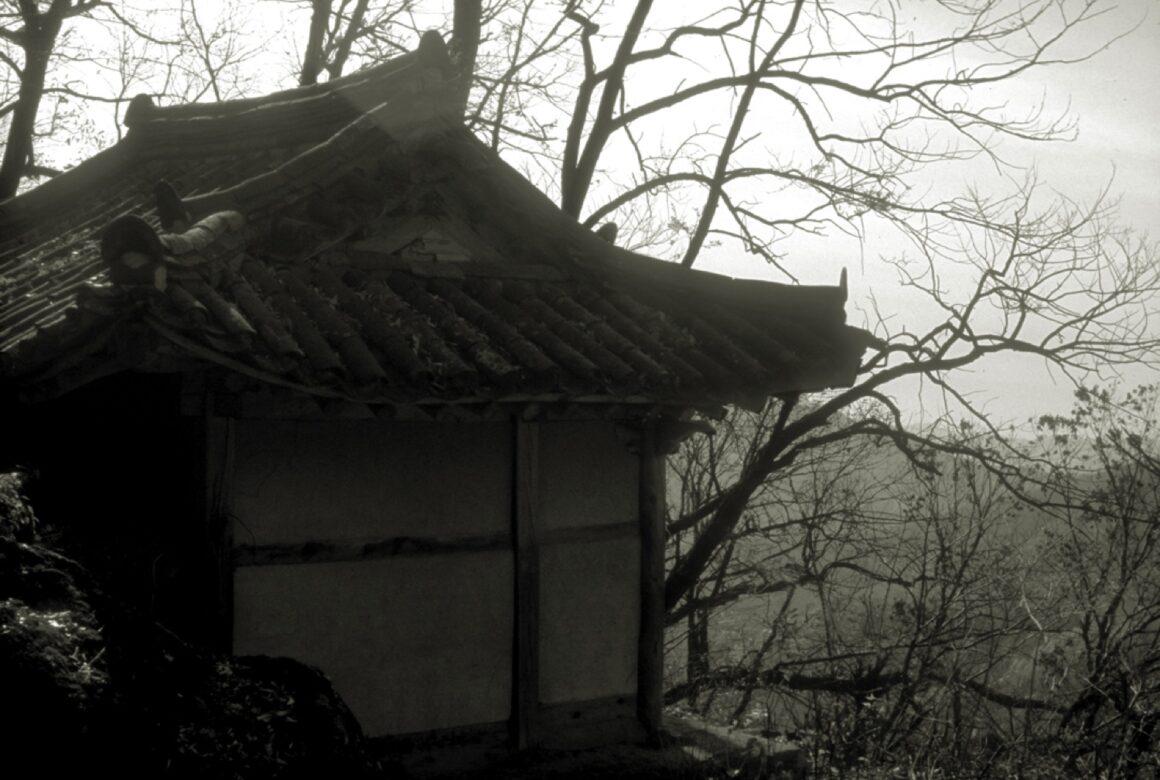
Teaching style
Seung Sahn implemented the use of simple phraseology to convey his messages, delivered with charisma, which helped make the teachings easier to consume for Western followers. Some of his more frequently employed phrases included “only go straight” or “only don’t know”. He even went so far as to call his teachings “Don’t Know Zen”, which was reminiscent of the style of Ch’an master Bodhidharma. Seung Sahn used correspondences between himself and his students as teaching opportunities. Back-and-forth letters allowed for a kind of Dharma combat via the mail, and made him more available to the school’s students in his absence. This was another example of his skillful implementation of unorthodox teaching methods, adapting to the norms of Western culture and thus making himself more accessible to those he taught. He was a supporter of what he often termed “together action”—encouraging students to make the lineage’s Zen centers their home and practice Zen together.He also developed his own kong-an study program for students of the Kwan Um School, known today as the Twelve Gates. These twelve kong-ans are a mixture of ancient cases and cases which he developed. Before receiving inka to teach (in Kwan Um inka is not synonymous with Dharma transmission), students must complete the Twelve Gates—though often they will complete hundreds more. One of the more well known cases of the Twelve Gates is Seung Sahn’s Dropping Ashes on the Buddha (the Sixth Gate)—which is also the title of one of his books. In the book The Compass of Zen, this kong-an is transcribed as follows: “Somebody comes to the Zen center smoking a cigarette. He blows smoke and drops ashes on the Buddha.” Seung Sahn then poses the question, “If you are standing there at that time, what can you do?” Not included in this version of the kong-an is the Kwan Um School of Zen’s following side note on the case, “…here is an important factor in this case that has apparently never been explicitly included in its print versions. Zen Master Seung Sahn has always told his students that the man with the cigarette is also very strong and that he will hit you if he doesn’t approve of your response to his actions.”
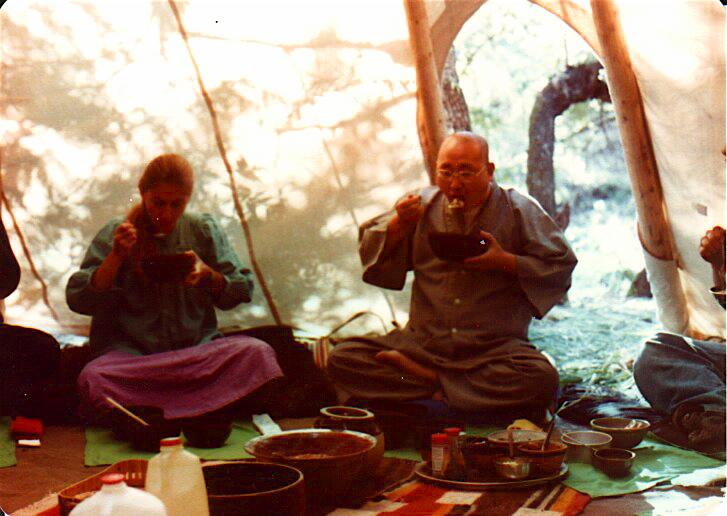
When Seung Sahn first began teaching in the United States, there was an underemphasis in his message on the significance of zazen (or, Zen meditation). Under advice from some students, however, he soon came to incorporate zazen into the curriculum more frequently. More than a few of his earliest students had practiced Zen previously under the Sōtō priest Shunryu Suzuki, laying out a convincing argument about how zazen and Zen were seen as inseparable in the Western psyche.
Later life
Throughout the 1990s, Seung Sahn made trips to Israel, which led to the 1999 opening of the Tel Aviv Zen Center. His remaining years were spent in particularly poor health—first having a pacemaker put in his chest in 2000, followed by kidney failure in 2002. In June 2004 he was given the honorific title Dae Soen sa Nim by the Jogye order in commemoration of his accomplishments, the utmost of titles the order can grant. Dae Soen sa Nim translates as “Great honored Zen master.”
Death
Seung Sahn died shortly after on November 30, 2004 at the age of 77 in Seoul, South Korea at Hwa Gae Sah, the first temple he served as abbot for starting in 1957.
Criticisms
There is a belief that Seung Sahn made too many students Dharma teachers. He also upset some in the Jogye Order by allowing lay Dharma teachers to wear long robes; while the Korean Jogye Order also gives the title poep sa (Dharma teachers) to laypeople, in Korea long robes are reserved for monks. It was true in the beginning of the Kwan Um School of Zen for people to become Dharma Teachers rather quickly mostly out of need in order to run practice. The current requirement is that a person must take the five precepts after at least four days of retreat or an agreed upon time by the guiding teacher of a Zen Center. To become a Dharma Teacher in Training will take the individual the minimum of two years after taking the five precepts. This also can only be approved of by the guiding teacher. The student will then take the ten precepts. To become a Dharma Teacher one must complete a minimum of two years of training as a Dharma Teacher in Training that includes a course of study and certain amount of time attending retreats and serving certain practice roles. To become a Senior Dharma Teacher will take a minimum of five years after becoming a Dharma Teacher and must be approved by the guiding teacher. At this time the person will take the sixteen precepts. Receiving inga (inka) only comes when a student has proven satisfactorily in further training sactioned by a Zen Master and members of the school. Becoming a Zen Master will require the sanction of several Zen Masters in and outside the school.
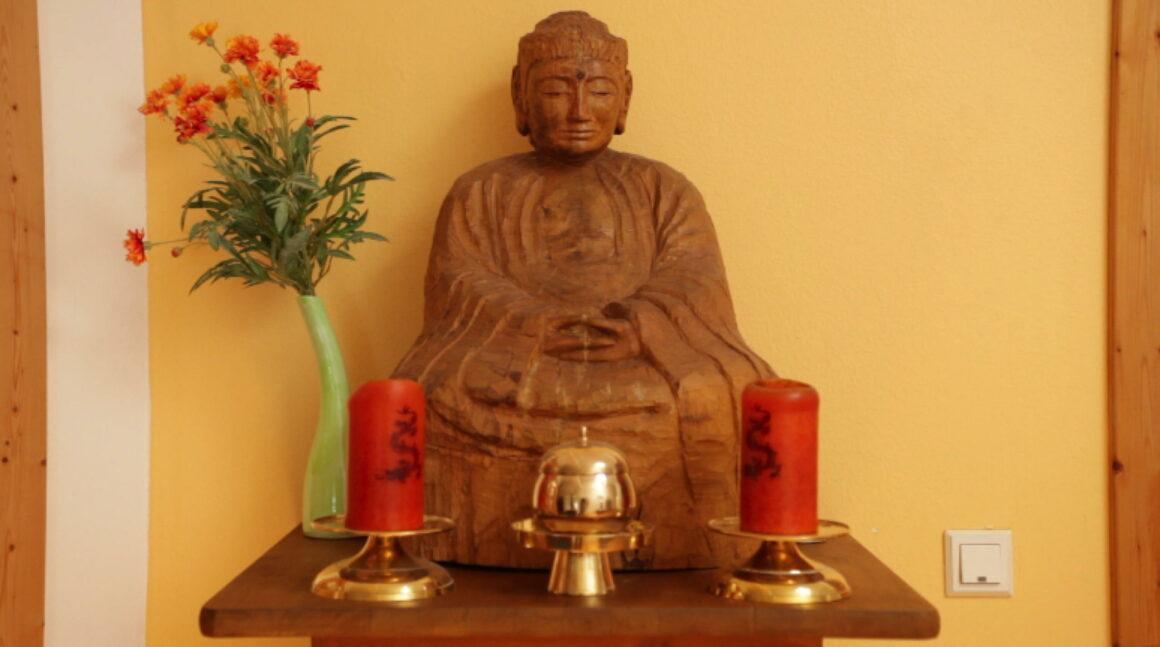
Seung Sahn was accused of carrying out sexual relationships with students secretly while supposedly celibate. The first accusations of sexual relationships between Seung Sahn and students came about in 1988. Sonia Alexander, former director of Cambridge Zen Center, has claimed that Seung Sahn had carried out long-term sexual relationships with a number of his female followers. Journalist Rick Fields confirms this, writing “the supposedly celibate Korean Zen master Seung Sahn (Seon-sa-nim) revealed long-term relationships with two students.” According to Sonia Alexander, when questioned about nature of the relationships Seung Sahn stated that “it wasn’t [romantic] love, it wasn’t lust.” These alleged relationships caused Alexander to end her involvement with the Kwan Um School, believing in retrospect that she had been used over the years only to help build more Zen Centers for the lineage. In addition to Alexander, author Sandy Boucher spoke with several other women who lived at the Cambridge Zen Center at the time, one of whom said that in her opinion Sonia was very much in the minority in feeling used and that Soen Sa Nim’s affairs had not been hurtful to the women involved. Notwithstanding her reservations, Alexander still has reverence for Seung Sahn, feels her time spent in the school was to her benefit, and subsequently rejoined the Kwan Um School as a Senior Dharma Teacher in 2011.
According to author Timothy Miller, “the Kwan Um organization has had to struggle with disclosures of controversial sexual conduct on the part of its leader; Seung Sahn was generally understood by his followers to be a celibate monk, and the revelation that he had had affairs with female students caused some members to leave the movement.”
Commenting during this period, Barbara (Bobby) Rhodes – now head Zen Master of the Kwan Um School of Zen – said they were “just people learning to live as a community” and their teacher was “just trying to learn the same thing.”
Zen Master Seung Sahn did admit publicly the nature of the relationships and did two repentance ceremonies. The Kwan Um School of Zen has since then developed and enforced an ethics committee that has very strict guidelines for teacher/student relationships and consequences for unethical behavior of any member of the school.
Only Don’t Know, Selected Teachings Letters of Zen Master Seung Sahn online.
- Gak, Hyon (2006). Wanting Enlightenment Is a Big Mistake: Teachings of Zen Master Seung Sahn. Shambhala Publications. ISBN 1-59030-340-7.
- Sahn, Sueng (2003). Zen: The Perfect Companion (Perfect Companions! Series). Black Dog & Leventhal Publishing. ISBN 1-57912-279-5.
- Seung Sahn; Hyon Gak (1997). The Compass of Zen. Shambhala Publications. ISBN 1-57062-329-5.
- Sahn, Seung; Hyon Gak (1992). The Whole World Is a Single Flower. C. E. Tuttle Company. ISBN 0-585-06104-1.
- Sahn, Seung (1987). Ten Gates: The Kong-An Teaching of Zen Master Seung Sahn. Primary Point Press. ISBN 0-942795-01-6.
- Kwan Um School of Zen (1987). Only Doing It For Sixty Years. Kwan Um School of Zen. OCLC 39712155.
- Sahn, Seung (1985). Zen Dialogue in China. Hong Bup Won Publishing.
- Sahn, Seung (1983). Chanting with English Translations and Temple Rules. Kwan Um School of Zen. OCLC 79625070.
- Sahn, Seung; Stanley Lombardo (1982). Bone of Space: Poems. Four Seasons Foundation. ISBN 0-87704-053-2.
- Sahn, Seung; David O’Neal (1982). Only Don’t Know: Selected Teaching Letters of Zen Master Seung. Primary Point Press. ISBN 0-942795-03-2.
- Sahn, Seung; Stephen Mitchell (1976). Dropping Ashes on the Buddha. Grove Press. ISBN 0-8021-3052-6.
Seung Sahn Soen Sa Nim’s lineage chart
Video
“Wake up! On the Road with a Zen Master”, a beautiful documentary about Zen Master Seung Sahn by independent filmmaker Brad Anderson from Boston. It shows Zen Master Seung Sahn’s energy while presenting the core of his teaching. Wake Up! is not only a rare portrait of an unusual and provocative teacher, but also an introduction to Zen Buddhism today. Wake Up! was shot on location during a teaching trip in Europe.
Here in six parts uploaded by vytautas baipsys. Material already released by the Kwan Um School of Zen.
Here a very impressive and strong Dharma talk of Seung Sahn Soen Sa Nim. It’s from 1996 at Jeong Gak Won in Dong Guk University. Zen Master Seung Sahn gives advice to the students about Zen and modern life. In Korean with English subtitles.
Another Dharma talk by Zen Master Seung Sahn, this time in Gainesville, Florida, USA. Year unknown, by Wojtek Kulwanowski on Youtube.
Also a beautiful document: Last Word of Zen Master Seung Sahn, a “Subong Zen Monastery” Documentary, produced by The Omni Production. It contains a short description of Seung Sahn Soen Sa Nim’s life, the very touching funeral ceremony and cremation 2004 with high aesthetic images.
The third Year Memorial for the Great Zen Master Seung Sahn. At the beginning Seung Sahn Soen Sa Nim is describing his time in Korea before becoming a monk, a time of great personal suffering because of the political and social difficulties of his country. Disappointed he leaves for the mountains and cuts his hairs. Following other material already used in the documentary above mixed with other Dharma talks.
Zen Master Bon Yeon about Seung Sahn Soen Sa Nim. Sep 22, 2010 – Excerpt from the Dharma Talk and Q&A given by Zen Master Bon Yeon (Jane Dobisz) at the Plymouth Zen Group. From Youtube by plymouthzen.
Links
- Official website of the Kwan Um School of Zen
